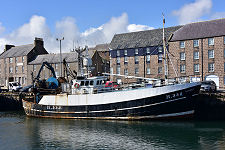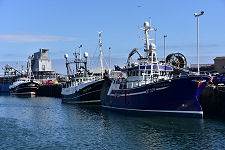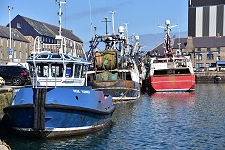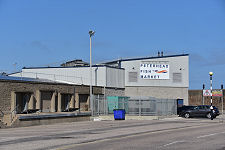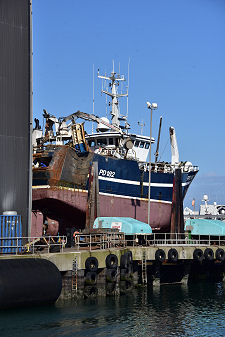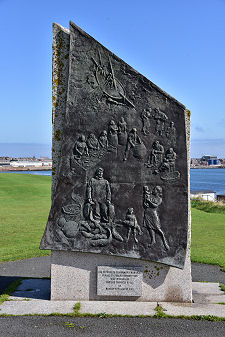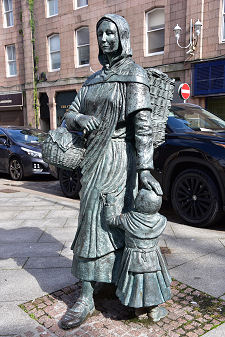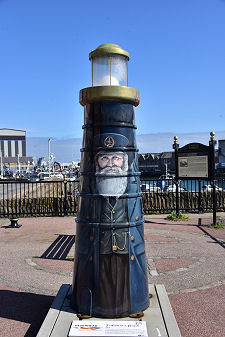 Broad Street: Reform Monument and Town House |
Peterhead has the distinction of being the most easterly point in mainland Scotland, though nearby Boddam runs it close. Much of the town is built on an east-pointing peninsula defined by the narrow estuary of the River Ugie to the north and Peterhead Bay to the south. Its setting and location have helped ensure that the story of Peterhead over the intervening four centuries has been greatly influenced by the sea.
The town was founded by George Keith, the 5th Earl Marischal and his brother Robert from 1587. At the time the total population numbered around 50, most of whom lived in a fishing village on the island of Keith Inch, which today forms the easternmost part of the town, beyond the harbours.
Much of the early port activity took place in the sheltered channel between the mainland and Keith Inch, and in 1739 a causeway was built connecting the island to the mainland. In the 1770s the South Harbour was built by John Smeaton, and Thomas Telford designed the North Harbour, added in the 1820s. (Continues below images...)
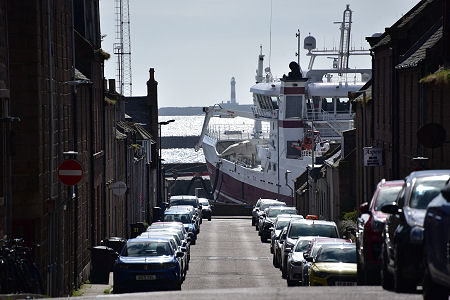 Fishing Boat and Residential Street |
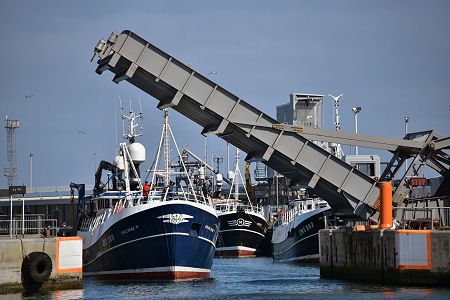 Lift Bridge Beween Harbours |
From the end of the 1700s, Peterhead became established as a fashionable resort and spa town. As one visitor, Robert Forsyth, put it in 1806: This is the most thriving and well built town on the coast of Buchan... it has, near its harbour, a mineral well... and is frequented in summer by not a little gay company, coming to enjoy the amusements of a rural town, thus thriving and elegant, as well as to repair health by sea bathing and by use of the mineral water. Here many elegant houses for the accommodation of strangers have been erected: there is also a ballroom under which there are two salt water baths.
But it was its harbours that made the most enduring impact on Peterhead. By 1820 it was one Great Britain's two leading whaling ports (along with Hull, in East Yorkshire). In that year Peterhead's 15 whaling ships brought 103 whales back to the town from the Arctic. At its peak in 1857, Peterhead's whaling fleet numbered 32 ships, but diminishing whale stocks and the introduction of shale oil to replace whale oil in lamps saw the fleet decline to 12 vessels by 1868, and the last whaling ship was put to other uses from 1892.
From 1888 the harbour facilities were greatly improved with the building of a series of huge breakwaters, the largest 900m in length, to create a vast "harbour of refuge" encompassing the whole of Peterhead Bay.
The boom and bust in the whaling industry was mirrored in the herring fishery. At the peak of the herring boom in 1890, Peterhead's fleet numbered some 580 vessels. When the herring stocks began to dwindle, the fleet turned its attention to white fish and after the First World War several trains left the town each day carrying fish to southern markets.
By 1987 Peterhead was Europe's largest white fish port, landing nearly 120,000 tonnes at Europe's biggest fish market, measuring nearly 400m from end to end. The related problems of fish stocks and quotas have since seen the number of fishing vessels based at Peterhead fall significantly and the fleet continues to face considerable difficulties today.
From the 1970s the shipping in Peterhead's harbours started to reflect another harvest from the sea. Today the town remains an important supply base for the North Sea oil industry. The industry also supports the active heliport a few miles to the west.
Peterhead itself can appear austere rather than pretty, especially if you catch it on a dreich day with the predominant reddish granite seeming to absorb much of the available light. Some of the architecture is very striking, especially the 1788 Town House. And in front of the Town House is Peterhead's centrepiece, a statue of Field Marshal James Keith presented to the town by King William I of Prussia in 1868. James Keith was the younger son of the 9th Earl Marischal. After fleeing Scotland following the 1715 Jacobite uprising. James went on to become a Field Marshal in the Prussian army and was killed fighting for the Prussians at the Battle of Hochkirchen on 14 October 1758.
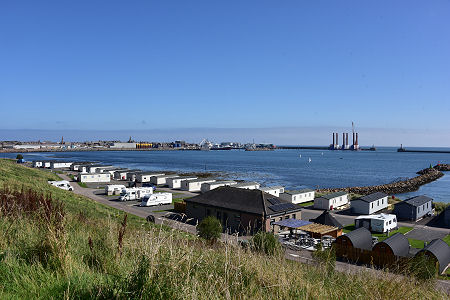 Peterhead Bay |
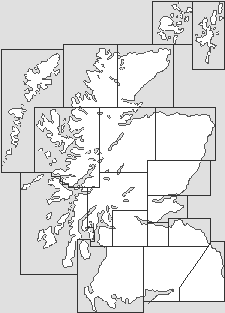
|
|
|
Visitor InformationView Location on MapWhat3Words Location: ///holly.described.eager |
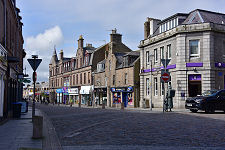 Shopping Street |
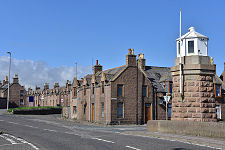 Guiding Light |
 Men United |
 Cask and Quay |
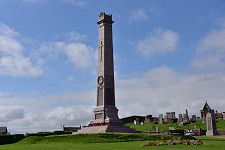 War Memorial |
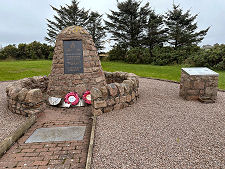 RAF Peterhead Memorial |
 Reform Monument |
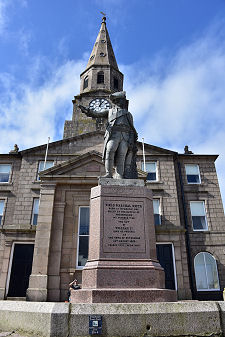 Field Marshal Keith |
 Field Marshal Keith |
